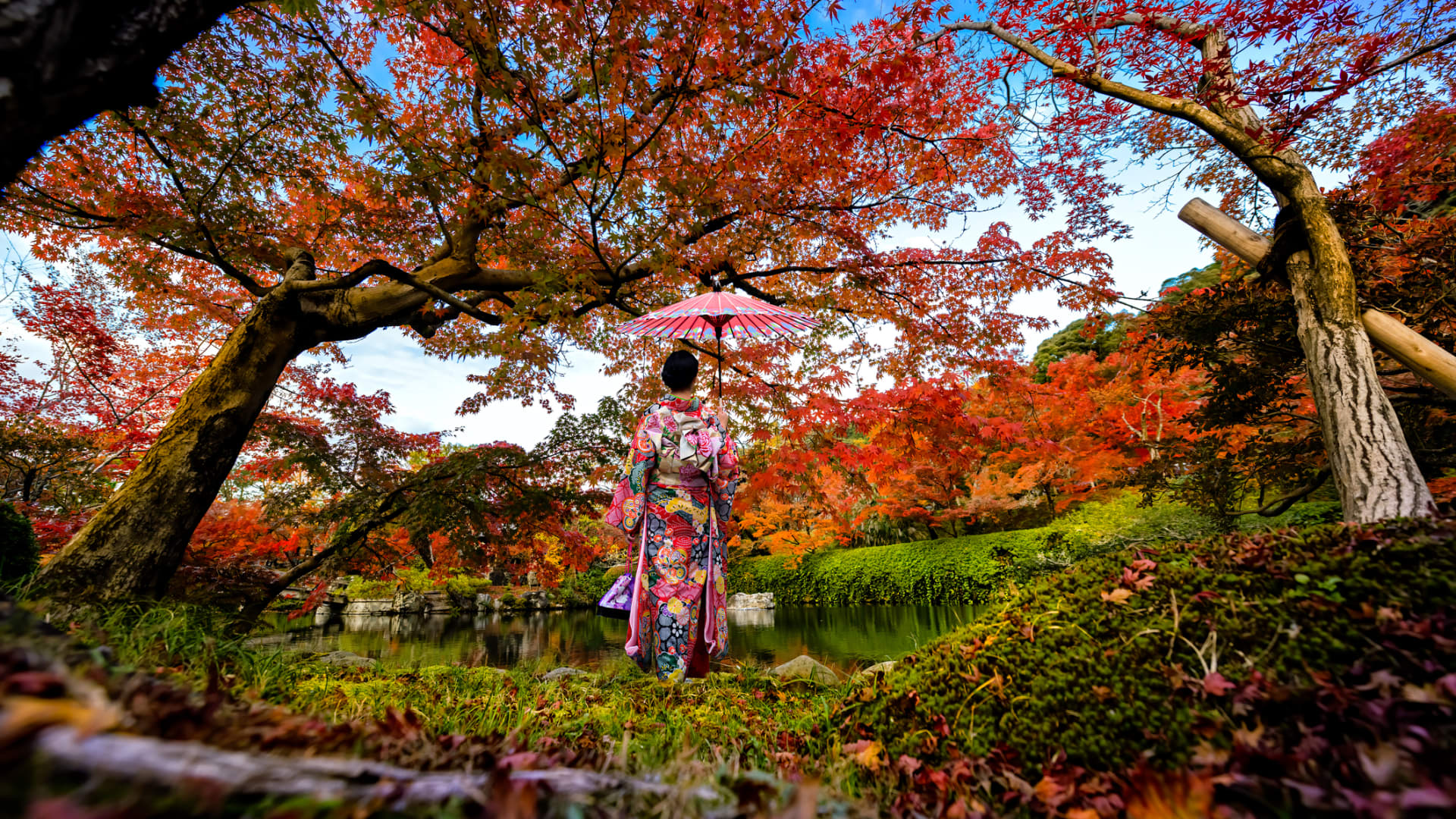I thought I managed to beat the tourist crowds on my recent trip to Japan.
On my first night in Osaka, I managed to get a picture with the famed Glico sign without anyone else in the background.
But perhaps I should’ve chalked it up to the fact that it was a Monday night.
I wasn’t so lucky later that week: It was next to impossible to get a picture at the top of the forest in Kyoto’s Arashiyama Bamboo Grove — about an hour away from Osaka — without being photo-bombed.
And my journey to a Kyoto Buddhist temple, Kiyomizu-dera, was no different — I got off a packed bus only to encounter a human traffic jam in the street leading to my destination.
On another day, at Comcast’s Universal Studios Japan, there were long queues for food stands selling seasonal or themed specials throughout the park. For one major roller coaster, The Flying Dinosaur, I waited around 70 minutes in the single-rider queue — which typically has shorter waiting times than the regular one.
Local and foreign tourists
My experience came as no surprise to Wanping Aw, CEO of the Tokyo-based travel agency Tokudaw.
She said queues may be longer because of staffing issues, and the crowds were likely a mix of local and foreign tourists. The former group is taking advantage of discounts from the government, doled out to encourage local tourism.
“Because of the domestic campaign, everyone is going to Mount Fuji or Hakone on the weekend,” leading to traveling time almost doubling, she said.
“On Saturdays and Sundays … it feels as if the entire Japan, like the local Japanese people, are going to Disneyland, like there’s a very big traffic jam on the expressway leading into Disneyland,” she added.
As for international visitors, many came rushing back once authorities announced the resumption of visa exemptions and individual, independent travel.
At Ichiran, a ramen chain popular with foreign tourists, I waited 40 minutes for a seat despite arriving at around 11 a.m. Several would-be customers left after hearing the estimated waiting time.
Japan first reopened its borders in June, but only to tourists on chaperoned package tours, and visas were required. In the months before those rules were lifted on Oct. 11, there were fewer traffic jams and queues, said Aw.
“I think my customers, they enjoyed Japan more,” she said.
“From June to maybe end-October, like everyone was very happy,” Aw added.
How strong is demand?
In October, the month when nearly all restrictions were removed, Japan recorded 498,600 visitors — more than double the 206,500 arrivals in September, according to preliminary data from the Japan National Tourism Organization.
For the upcoming winter season, Club Med’s resorts in Hokkaido will be running at close to full occupancy, according to Rachael Harding, the company’s CEO of East, South Asia and Pacific markets.
Online bookings to Japan jumped by 79% within a week after authorities announced the easing of measures, she told CNBC Travel in an email.
Tokudaw’s Aw said bookings with her company remain strong for the year-end period, at around 85% of pre-Covid levels. She observed an “abrupt drop” in January bookings, followed by an uptick in April, when cherry blossoms bloom.
H.I.S. Travel, however, told CNBC Travel that its customers from Singapore have made bookings all the way through to April.
When asked if demand softens in the new year after the school holidays in Singapore end, Fritz Ho of H.I.S. said: “In fact, no. In fact, I would say the inquiries [are] picking up.”
He said working adults and friend or family groups are also traveling around the Lunar New Year holiday in January 2023.
Ho, the manager for meetings, incentive, conventions and exhibitions, estimated that demand has reached 75% to 80% of 2019’s levels.
He cited the weak Japanese yen as one reason for the popularity of the destination, adding that customers are staying for more days than before and are willing to spend more.
The dollar is around 20% stronger against the yen compared with the start of the year.
Club Med’s Harding said the yen’s weakness makes Japan a “much more affordable holiday destination at the moment,” but that the country was popular even before the currency weakened.
“Japan has always been an extremely popular destination whether it be for its pristine ski conditions, architecture, art, traditions, food or fascinating pop culture,” she said.
Both Ho and Aw also said Japan’s high hospitality standards were attractive to visitors.
China: the missing piece
To be clear, despite the recovery in tourism, October’s arrivals are still only a fraction of the more than 2 million people per month in 2019, before the Covid pandemic hit.
Chinese tourists, who still need to quarantine when they return from overseas, remain the missing piece of the puzzle.
In October 2019, more than 730,000 visitors from China made up nearly 30% of arrivals in Japan, national tourism data showed. That’s a far cry from the 21,500 Chinese tourists who made up 4.3% of October 2022’s visitors.
Analysts largely expect China to reopen between the second and third quarter of 2023, and Club Med’s Harding said tourists from the country are “definitely important for the local [Japanese] tourism and economy.”
Tokudaw’s Aw said she thinks the huge surge in arrivals could cause the understaffed tourism sector to “collapse.”
That said, she told CNBC Travel that there were Chinese-speaking staff on every level of a high-end hotel in Tokyo that she recently went to.
“Japan is really serious about Chinese money,” she said.
Disclosure: Comcast is the parent company of NBCUniversal and CNBC.
